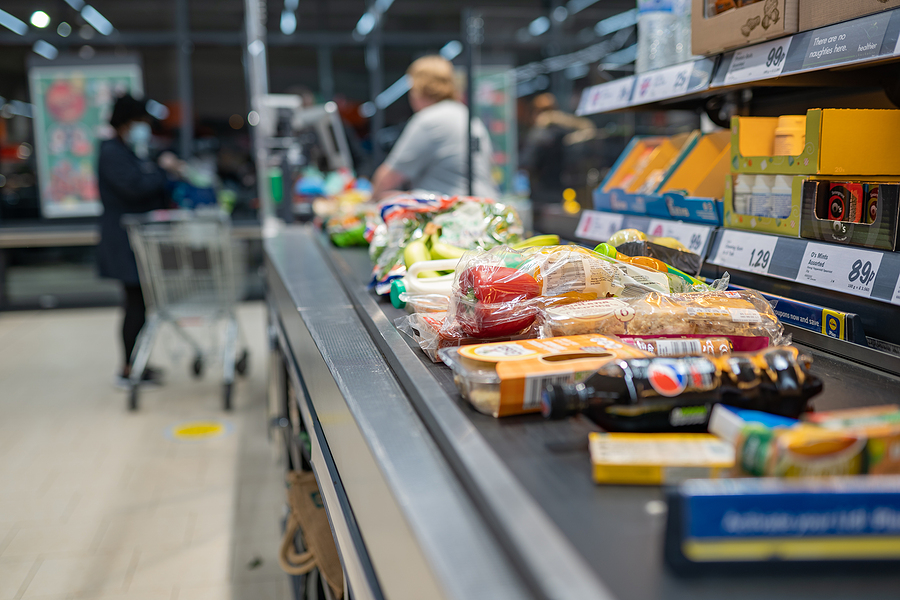By John Gilbo, Pricefx
Price check on potatoes on aisle three – or page three. Whether consumers like theirs mashed, roasted, purchased in-store, online, or in-app, grocery players need to watch carefully and act accordingly.
Consumer behavior dramatically shifted as we were encouraged to stay at home, leading us to push a virtual shopping cart down the aisles of Instacart and online counterparts to grocery brick-and-mortar. According to research from Retail Feedback Group, half of shoppers purchased both in-store and online. In particular, this shopping behavior was prevalent with younger shoppers (66% of Gen Z and 61% of millennials). And during the pandemic, shoppers used two or more grocery providers (62%).
This is good news for grocers, who have the opportunity to attract shoppers, as the report suggests that today’s consumer is willing to try more than one service. Each grocer has their own strategy on deals and pricing to win loyalty.
Amazon Fresh pushes aggressive pricing, while Kroger offers buy one get one deals — but which one is most effective? And how does this shift now that we shop in a hybrid world?
Every grocer’s shopping strategy should have a dive deep on pricing management and strategy. Consider these as you put your prices to the test.
Overcome the biggest challenge of everyday price management
Many focus on promotions, markdowns, and clearance but keeping up with “best” everyday price is difficult with its rules and relationship variables.
The pandemic meant few promotions were needed because scarcity meant customers bought what they needed. While price sensitivity wasn’t an issue in 2020, grocers had to reevaluate their price management, especially as supply chain issues became a factor. The necessities were an issue, from flour to toilet paper. When lockdowns were in order, demand went up for a number of these items. But what about other items on the shelves?
Now that we’re shifting to a hybrid world and as foot traffic has increased into stores, we still see shoppers who have learned the new comforts of shopping via app or online for their food, groceries, and other household needs. Therefore, price needs to adjust to these many factors.
Shift how you view revenue and margin and understand how discount pricing affects the bottom line
Promotional price impacts KPIs like revenue, margin and volume but determining the true impact to these KPIs can be a tricky and layered process (think: coupons on top of discounts). Did the product performance improve, did the category see a lift or just a tradeoff from other items, how did my best customers react to the promotion? Grocery players need to pre-determine and define what success looks like and understand how to answer those questions.
Pricing options are plenty. For example, stores can offer staggered, not stacked, price offerings. While stacking offers gets tricky, it’s more important to determine what drove customers to buy and participate in the offerings. Get to the root of what works, doing more of these and stopping the ones that don’t.
It may seem like an art but there’s a method to the complexity of managing pricing levers to customer segments. It can be difficult to execute and harder to analyze, and then it’s a whole different game when you add changes to any channel. For example, buy 5 and save in store, or offer free shipping over a certain price in the digital shopping cart. Grocers also need to understand elements of price with loyalty cards that track back to grocery, competitor pricing, and use of loyalty card data.
Homegrown is not always best
In-house, home-grown tools, or first-generation software isn’t keeping up with the times. Grocery has been forced to evolve, and now it needs to keep up. The major issue I’ve seen affecting grocers is the efficiency and speed needed to manage price and execute it across all stores, not just one location. Grocers need transparency into what truly works and must have several factors on the line, from understanding customer willingness to pay, managing price, analyzing it, executing it, and measuring success so we can do it all over again across any SKU.
For example, many systems are not equipped to reduce the price to $0.99 on a liter of soda and shift that price across all stores across any region. Often a very manual and labor intensive, error-prone process, this is typically executed with multiple systems and takes up time from different teams. What is needed is a pricing system that can make good decisions and is equipped with good analytics that can keep up because speed to execution is imperative in this highly competitive grocery market.
As you evaluate pricing strategies and tactics, remember that you are no longer competing with other brick and mortar, we’re now competing with online counterparts to those physical stores, and other digital competitors.
